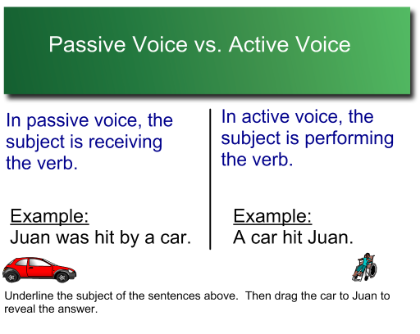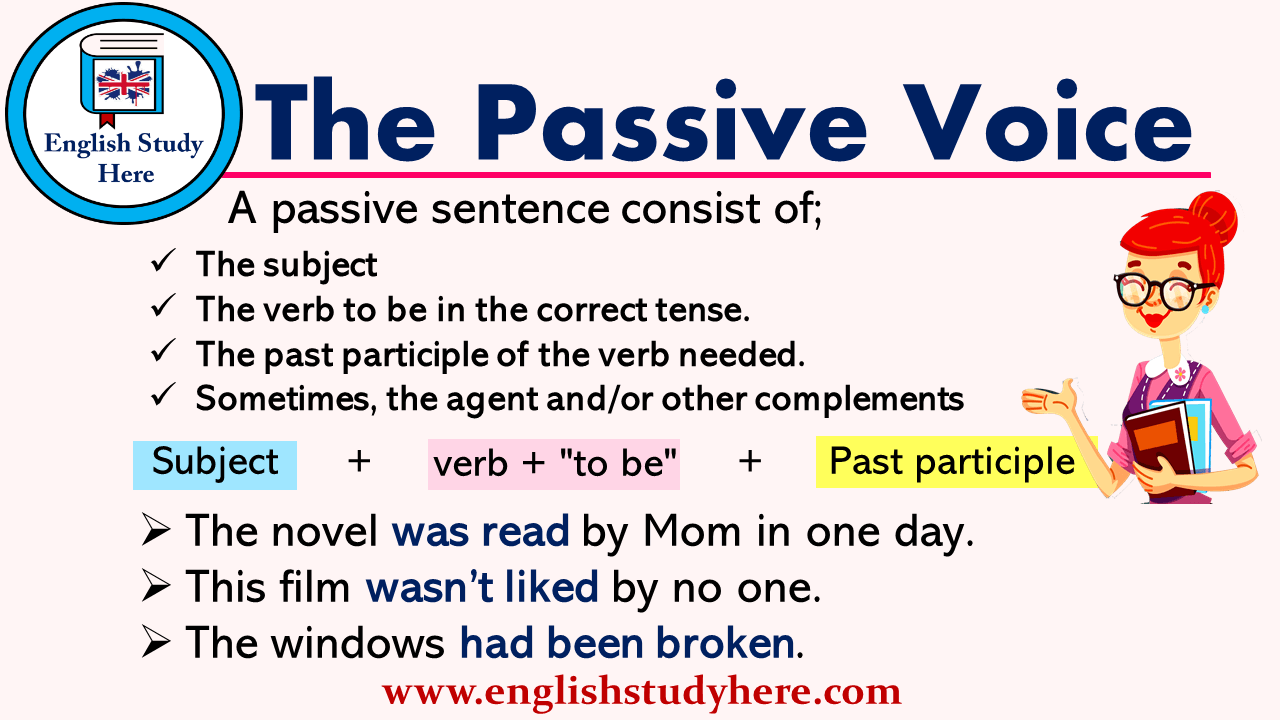
But the second sentence is the clearer way to share this information, directly telling who did what. Here, “popcorn” is the focus because it’s the subject in the sentence: “popcorn” gets “burned” by the dog. It receives the action instead of doing it and “gets” the verb from the object: A gets B by C. With the passive voice, the subject is acted upon, so we can say that the subject is being “passive” in the sentence. The main reason is that the passive voice changes the focus of a sentence by stating its meaning in a less direct way. You’ve probably heard that the passive voice is “bad,” but may not know why. Since we usually write and speak using the active voice, it’s important to know about its opposite: the passive voice. Here, he (S) bites (V) the hand (O) “he” does the action “bite.” b. You can see that the verb comes immediately after the subject. Here, the dog (S) burned (V) the popcorn (O). With the active voice, the subject acts, so we can say that the subject is being “active.” In other words, the subject does the action to the object: A does B to C. Basically, the active voice puts emphasis on the most important part of the sentence, so it’s the clearest, most direct way to share information. In English, the best way to write and speak is almost always with the active voice. The active sentences only have the active form of the main verb.Īs you now know, a sentence’s verb determines which type of voice it will use: the active or the passive. Sentences with ACTIVE VERBSĪs you can see, all of the passive sentences include the verb “ to be” and the past participle form of the main verb. Here is a chart to help you see the difference between the use of active and passive verbs. A passive verb results in the subject being acted upon, formed by the verb “to be” and the past participle form of the main verb in the sentence.An active verb results in the subject doing the action in the sentence.

Voice is determined by the way that a verb is used in a sentence- its active form or its passive form.

In general, teachers encourage students to avoid the passive voice in their writing, though there are exceptions. Most of the time, we write and speak in the active voice because it is the clearest and easiest way to share information. These form the voices of a sentence: the active voice and the passive voice. In English, we can use active or passive verbs to determine the focus of a sentence.


 0 kommentar(er)
0 kommentar(er)
